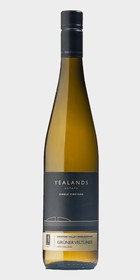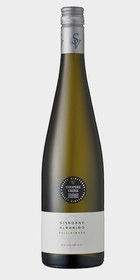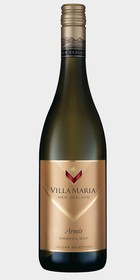They may be tricky to pronounce but, as Jo Burzynska explains, the crop of new wine varietals emerging around the country are well worth the effort
From Abouriou to Zweigelt, there are thousands of wine grape varieties at large in the world, the majority of which you’ll have never heard, let alone tasted.
Here in New Zealand, we’ve focused on a single variety like no other winegrowing nation, but as a crop of new varieties starts to spring up in our vineyards, it’s an exciting time for both winegrowers and drinkers to explore their fresh potential.
Sauvignon Blanc currently accounts for over half of New Zealand’s vineyard area, and that stems from its ability to make such unique expressions of the variety that proved so popular internationally, production couldn’t keep up, offering little incentive for experimentation with other varieties.
However, with recent years seeing its demand and supply come into sync, more winegrowers have been trying the wider range of grapes increasingly available to them.
Our cool climate means many of these newcomers are the white varieties that don’t need as much heat to ripen as reds, so look out for the likes of Grüner Veltliner, Albariño, Arneis, Sauvignon Gris and Pinot Blanc starting to appear on the shelves.
However, there are also some new reds to choose from, with a growing array of fruity Tempranillos and Montepulcianos to be found, a handful of fragrant St Laurents, and northern Italian Lagrein vines just starting to bear fruit.
As it’s the first time many of these varieties have been planted in Kiwi soil, it’s intriguing to see how our homegrown expressions compare with those from their home territory. It’s been encouraging that many tick the key boxes for potential in both making wines that carry the signature of the variety, while also adding an original – often fruit-charged – Kiwi twist.
But it’s not just great liquid in the bottle that’s required for mainstream success. History has shown that if drinkers can’t pronounce a grape’s name they’re less likely to buy wines made from it. That certainly seems to be the case with another newer variety, Viognier (vee-ON-yay).
While New Zealand has been making some delicious examples of this opulent, spicy and apricot-fruited French variety, it hasn’t taken off in the way that was hoped. In a similar way to Gewürztraminer, it seems to have been held back by its name.
To be fair, Sauvignon Blanc isn’t that easy to say either, but the sheer uniqueness of New Zealand’s style meant people got over it. Pinot Gris is a far easier ask, but while it’s been a hit on home turf, our examples aren’t distinctive enough to have been embraced overseas in the same way
as Sauvignon.
So could any of these new vines on the block be a contender for Sauvignon’s crown? It’s still too early to tell, but what’s already clear is that they’re injecting some exciting diversity and colour into our local wine mix.
Grüner Veltliner (GROO-ner FELT-lee-ner)
The flagship white grape variety of Austria makes crisp and often intense dry wines with a distinctive white pepper note. It’s become increasingly trendy in the States, where they have overcome the difficulty in pronouncing its name by shortening it to ‘Gru-Vee’, a moniker that rather suits the classy wines of this hip grape.
Since the first commercial release of a New Zealand example in 2008, there are well over a dozen examples on the market today, largely from the Marlborough region. While our local examples are lighter than their Austrian benchmarks (something that may change with greater vine age), Grüner has had a good start, producing fresh, fruity wines with a profile and versatility with food similar to dry Riesling.
Yealands Estate Single Vineyard Marlborough Grüner Veltliner (RRP$22.99)
A gorgeous fruit-driven Grüner with notes of citrus, quince, peach and a hint of classic white pepper spice.
?Albariño (al-ba-REEN-yo)
Albariño hails from the cool, damp climes of Spain’s northwestern Galicia region, where it makes largely unoaked, dry and lemony-crisp wines that often possess fleshy peach fruit and a salty mineral character. It’s become a trendy variety across the world and is prized as the perfect wine to accompany seafood.
With the first vines planted in New Zealand as recently as 2009 and just a handful of examples on the market, it’s still early days for the variety here. However, an impressive first wave of examples from our shores suggests this could well be one of the more successful new arrivals.
Coopers Creek “Bell-Ringer” Gisborne Albariño (RRP$19.99)
Coopers Creek was the first New Zealand winery to release an Albariño and its multi-award-winning Bell Ringer has become the benchmark for the variety in this country. It’s a delicious dry wine with pure peach fruit infused with hints of herb, wrapped around a fresh citrus and mineral core.
Arneis (ah-NACE)
“Little rascal” is the literal translation of Arneis, given it’s difficult to grow; in fact, it almost became extinct in its northern Italian home. Nevertheless the grape, which makes soft and full-bodied wines often with a pear fruit and hazelnut character, has been adopted by a number of New Zealand wineries in recent years, following pioneering plantings at Clevedon Hills near Auckland in 1998.
Villa Maria Cellar Selection Hawke’sBay Arneis (RRP$19.99)
Ripe and rounded, this attractive expression exhibits the variety’s characteristic viscosity in its palate of apple, nut and whisper of citrus.
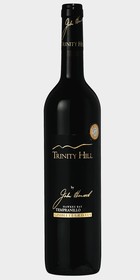
Tempranillo (temp-ra-NEE-o)
Tempranillo is a classic Spanish red variety.The dominant variety in Rioja, it’s behind many of Spain’s top wines. It ranges from making soft, light and strawberry-fruited wines through to rich, fuller-bodied, darker-fruited and savoury styles, with most New Zealand expressions sitting in the middle range of this spectrum.
Trinity Hills Gimblett Gravels Hawke’s Bay Tempranillo (RRP$34.99)
Trinity Hill has been working with Tempranillo longer than most and is making some great examples. Its latest release has vibrant and juicy strawberry and red fruit palate, notes of liquorice spice and dark chocolate.
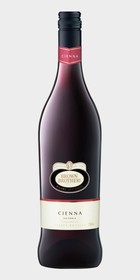
Cienna (see-ENNA)
New grape varieties are being created too. Cienna was developed in 2000 in Australia by crossing Spanish variety Sumoll with Cabernet Sauvignon and is currently unique to Australian wine company, Brown Brothers. While it’s proved popular, a variety that has no history to draw on has brought challenges, according to Brown Brothers’ Ross Brown. He says it wasn’t until they experimented with the vines’ location that they started to show their full potential.
Brown Brothers Cienna, Victoria, Australia (RRP$15.99)
Sweet and soft strawberry, cherry and raspberry, slight spritz and just 6.5 per cent alcohol, makes this wine light, bright and easy drinking.


